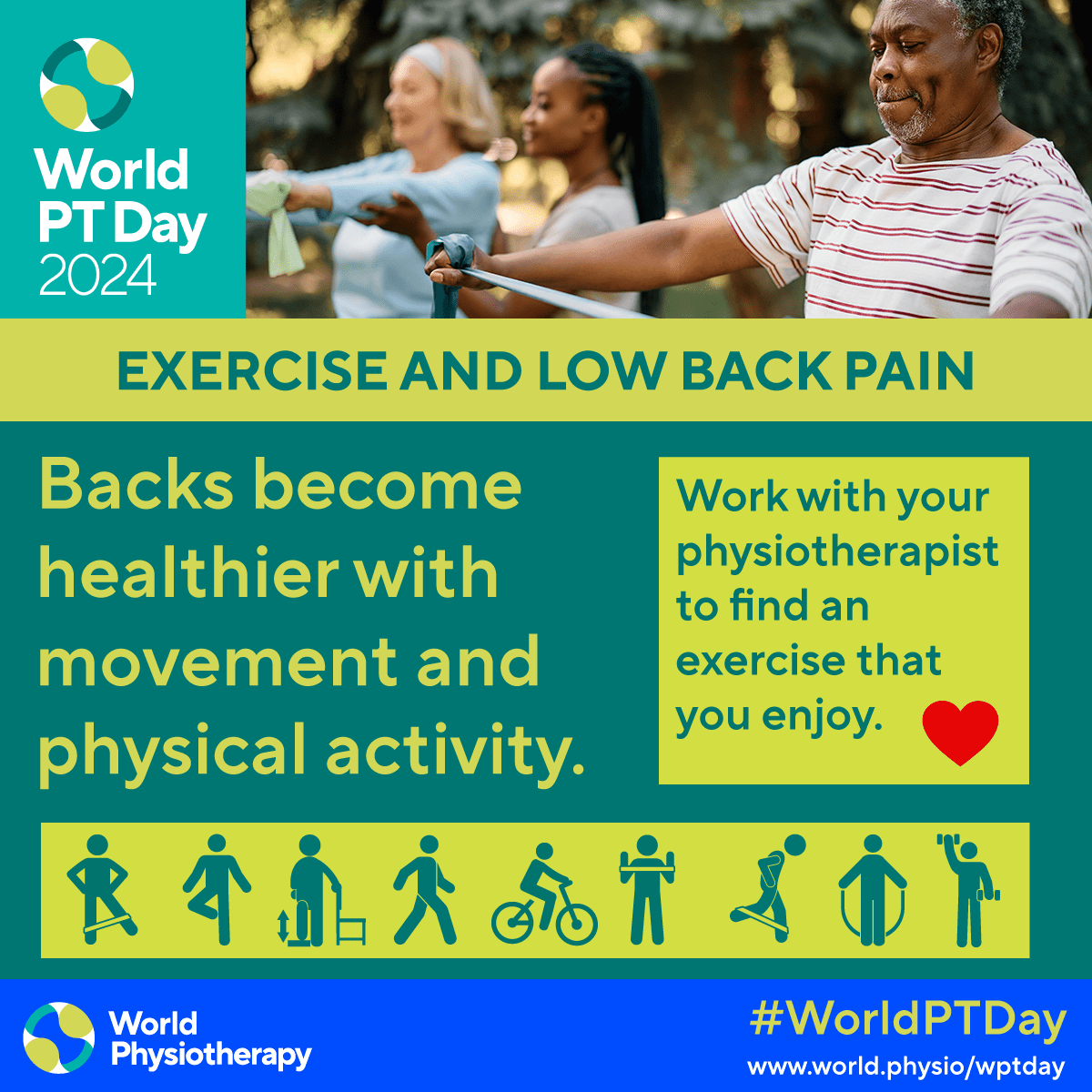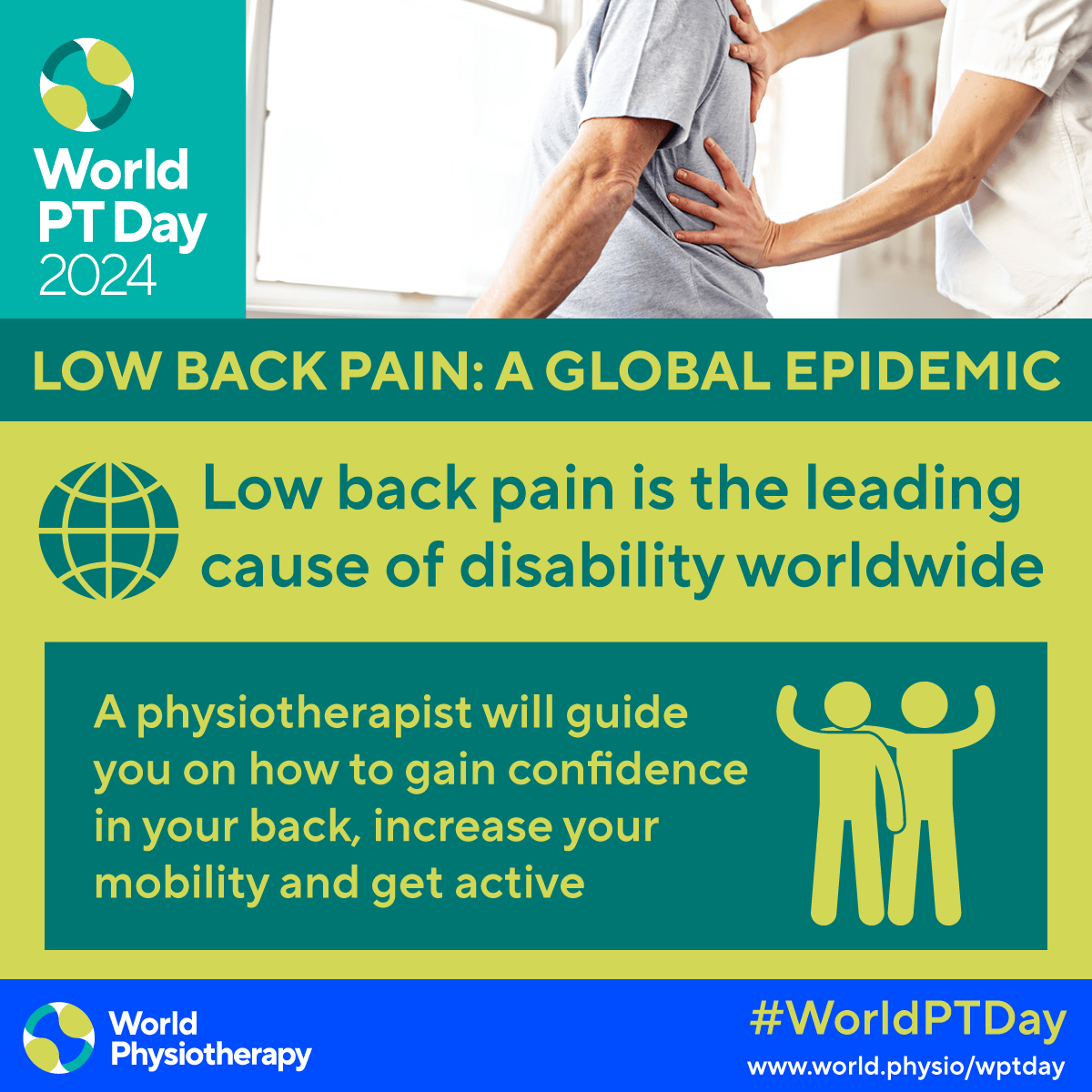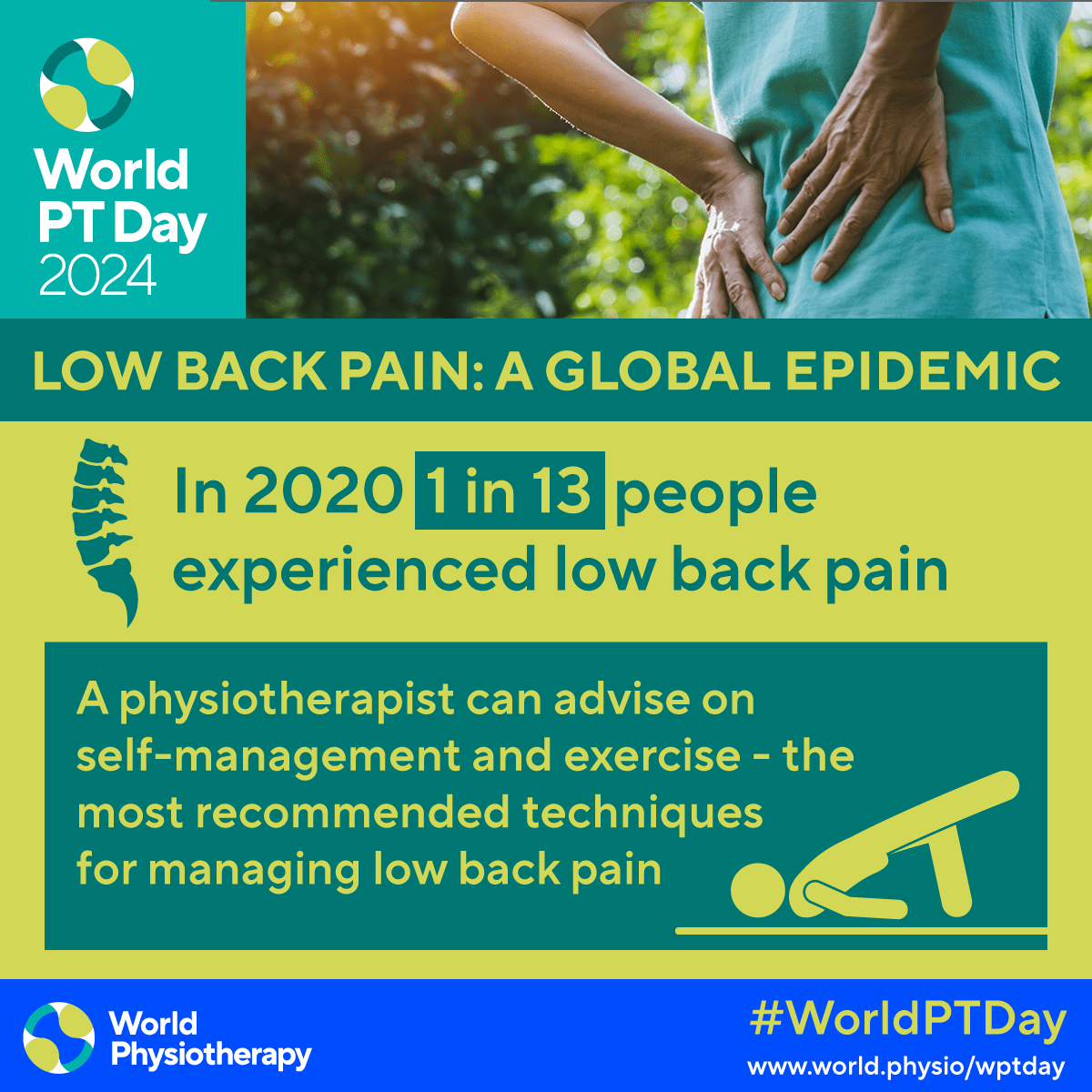World Physiotherapy Day is held every year on 8th September, the day the World Confederation for Physical Therapy was founded in 1951. It is a day when physiotherapists can celebrate the profession and how much of an impact we have on people’s lives!
This year, World Physical Therapy Day is focusing on a common issue that affects many of us: Low Back Pain (LBP). Here’s what you need to know and how physiotherapy can play a crucial role in helping manage and resolve low back pain……..
Understanding Low Back Pain and How Physiotherapy Can Help
- Low Back Pain is Incredibly Common – Did you know that LBP is the leading cause of disability worldwide? In 2020, about 619 million people experienced it—that’s roughly 1 in every 13 people.
- It Can Happen to Anyone – LBP can affect people of all ages, and almost everyone will experience it at some point in their life. However, it’s important to be aware that, for most people, the pain doesn’t last long. Only a small number of people will develop Long term (chronic) LBP, which lasts more than three months.
- There is No Single Cause – In 90% of cases, LBP is ‘non-specific’, this means that there isn’t one particular issue—like a joint, muscle, or disc problem—causing the pain. It’s also not usually linked to any serious underlying disease.
- Physiotherapy Can Help – If you’re dealing with LBP, a physio can offer expert advice and treatment to help you feel better. They can improve your overall health, reduce the likelihood of future back pain, and support your recovery.
- Scans Aren’t Always Helpful – Sometimes, scans like MRIs or X-rays show things like disc bulges or arthritis, but these findings are common, even in people who don’t have pain. As we age, these changes are normal and don’t necessarily mean they’re causing your pain.
- Movement is Medicine – Your back is strong and designed to move. Regular physical activity, movement and exercise helps keep it healthy. There’s no need to be overly cautious—excessive protection can actually increase your fear and make things worse.
- Nothing is ‘Out of Place’ – Contrary to common belief, your back doesn’t ‘slip’ out of place. Your spine is robust and stays in place, even if you’re experiencing pain.
- Rehabilitation is Key – No matter what type of LBP you have or how long you’ve had it, rehabilitation is essential. It helps you understand your pain, supports your recovery, and gets you back to doing the things you love.
- Exercise is Crucial – Staying active is one of the best ways to manage LBP. There isn’t one type of exercise that’s better than another—it’s all about finding what works for you and sticking with it. Your physio can guide you in choosing the right exercises.
- Chronic LBP Isn’t Usually Dangerous – Although it can feel overwhelming and be exhausting, it’s rarely linked to serious issues. Most people recover well with the right care.
- Non-Surgical Treatments Work Best – Surgery is rarely needed for LBP. Physios can offer various treatments, such as education on managing your pain, supervised exercise programs, and manual therapy, all tailored to your needs.
Remember, if you’re dealing with low back pain, you don’t have to face it alone. We are here to help you navigate your recovery and get back to living your life fully.
Read more about how goPhysio can help you of you have back pain








